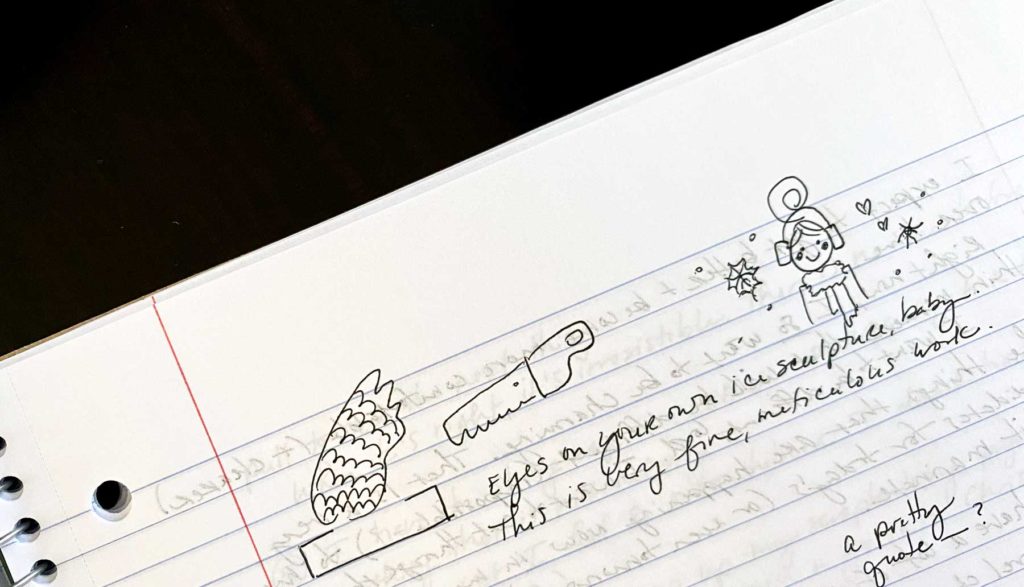Boost Your Creativity with This Simple Tool
Last week, I kicked off a month-long series on creativity. If you missed Part 1: Developing Your Curiosity, you can find it here: The Rainbow’s End: 3 Ideas to Help You Find Your Creativity.)
Today, I’m sharing my favorite tool for boosting your creativity. It’s inexpensive, easy to use, and you probably already have one. I’m talking about a notebook!
Now, before you run away—if writing things down isn’t your thing, I promise to give you a bunch of alternatives. You don’t have to use a literal notebook! What you need is a safe place to gather ideas and experiment.
“…Everyone who is human has something to express. Try not expressing yourself for twenty-four hours and see what happens. You will nearly burst. You will want to write a long letter, or draw a picture, or sing, or make a dress or a garden.” —Brenda Ueland
Here are 3 reasons to keep a notebook:
1. Give yourself the opportunity to practice, not perform.
“Write with the door closed, rewrite with the door open. Your stuff starts out being just for you…” —Stephen King in On Writing
We have more opportunities than ever before to share our work with others. However, sharing your work too soon (or too often) can drain your creative energy.
We need places to practice without feeling pressured to get everything right the first time. This gives us a chance to develop our instincts for what we consider good work rather than relying solely on other people’s reactions.

2. Give yourself a safe space to be honest.
One of the reasons creativity is so hard, is that we’re not safe even from ourselves. We’re afraid to make a mistake or be found out. However, learning to communicate authentically is a first step in creating better work.
In The Life-Giving Path online workshop, I encourage people to try spiritual journaling as a tool to uncover their honest thoughts. A notebook can be a place to listen without judgment and practice telling the truth.
This can be difficult at first. We’re terrified someone will come along and read what we wrote. However, over time, my journal has become a freer place. It’s filled with typos. Grammatical errors. Sometimes, when I can’t choose between two words—I’ll just write them both down smack dab next to each other in a completely nonsensical way.
Occasionally, I’ll admit to being really annoyed with people I care about! For me, this is a creative and spiritual practice. In my notebook, I lay it all out there so I no longer have to use so much energy covering it all up. Then, I’m free to listen and gather inspiration. When I’m stuck, I ask for help.
3. Give your ideas a place to gather.
Once you begin gathering ideas, more will start to find you. They’re like cats. Word starts to get around that you take good care of strays. Pretty soon, you’ll wake up in the morning and find a whole herd of them waiting for you just outside the door.
“Ideas are like rainbows, we need to record them with a pencil or they soon fade right out sight.” —Kathy Liden
If there’s something you daydream about—opening an art studio, writing a book, starting a podcast—give yourself a place to start making it real, if only on the page.
Some of you may be saying, “Notebooks aren’t really my thing. Now what?”
Here’s a list of notebook alternatives:
- A sketchbook.
- A camera (or the camera roll on your phone).
- A closet where you stuff your latest paintings.
- The notes app on your phone.
- A scrapbook.
- An Excel spreadsheet. (Beautifully-arranged data can be a work of art!)
- A secret Pinterest board.
- A portable moodboard (or an envelope) where you stick fabric samples, pieces of trim, or design inspiration.
What creativity tools would you add to this list? I’d love to hear them!
Next up: creative collaboration! What to do (and not do!) when it’s time to share your creative ideas + a few things I’ve learned the hard way…
